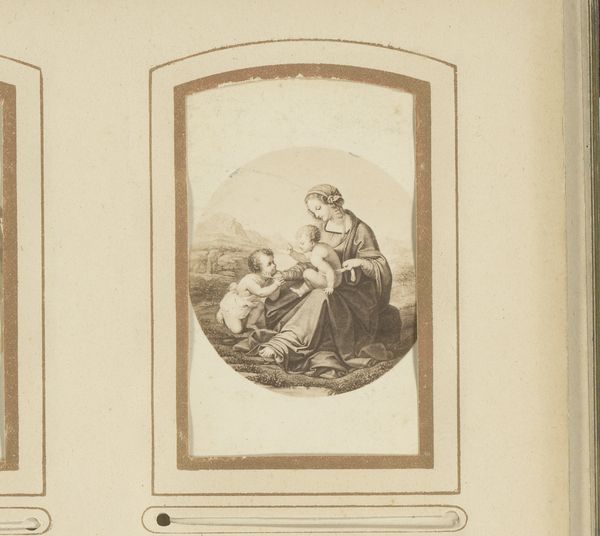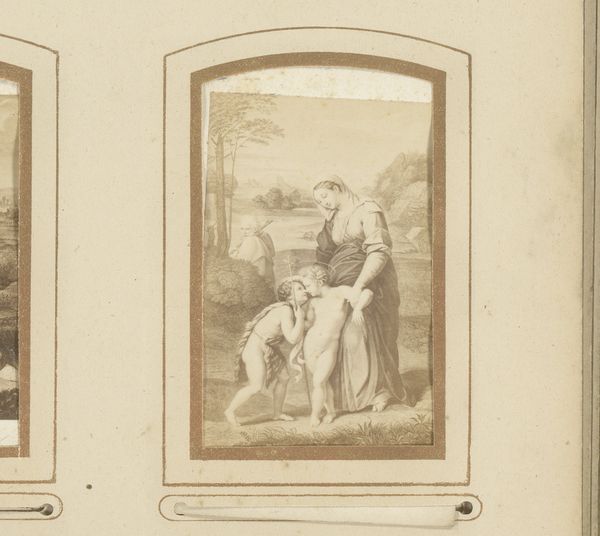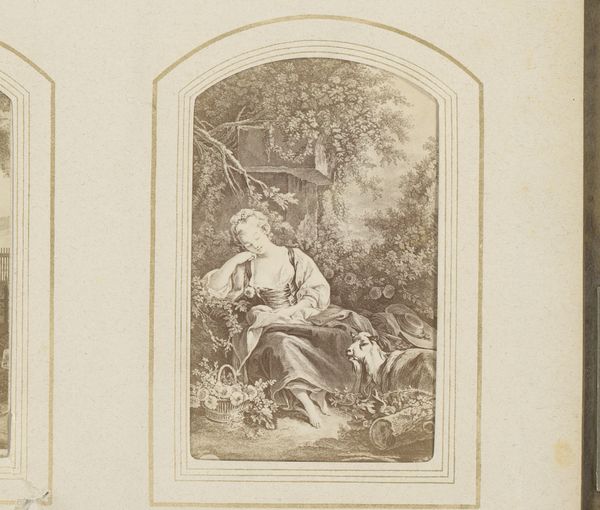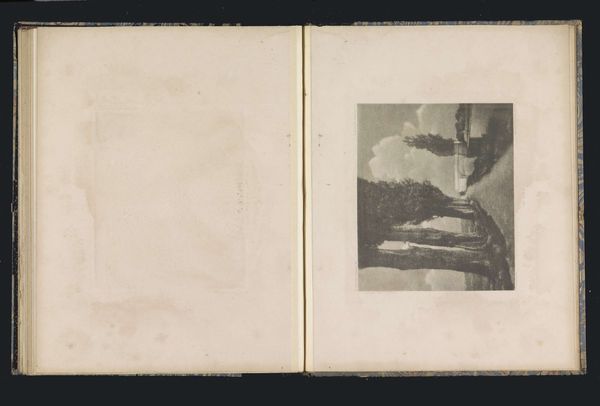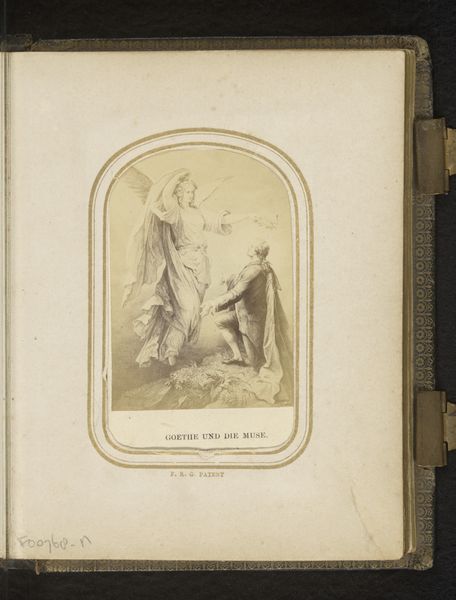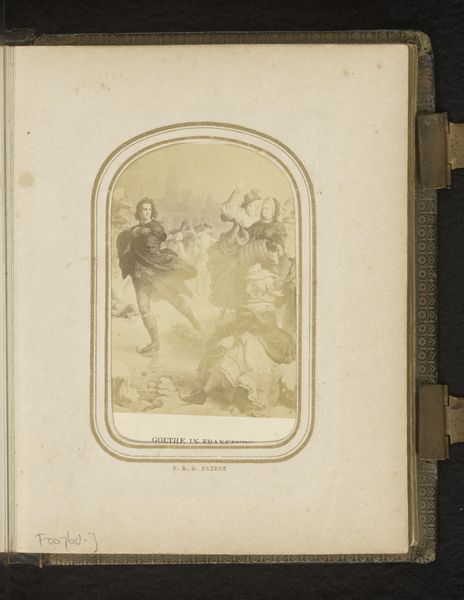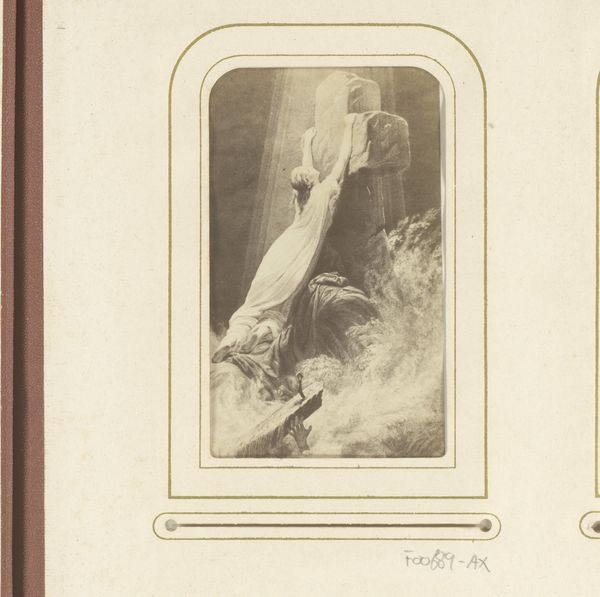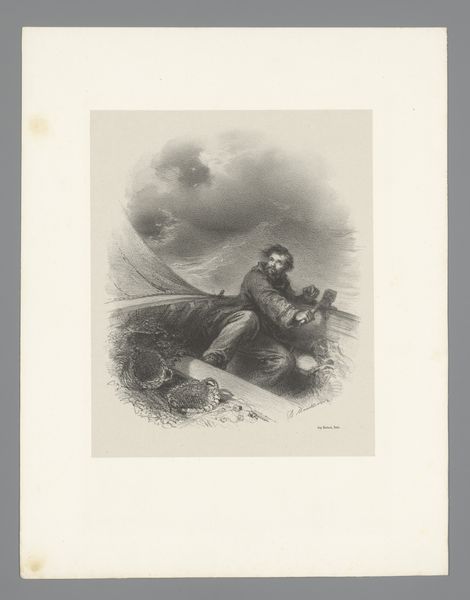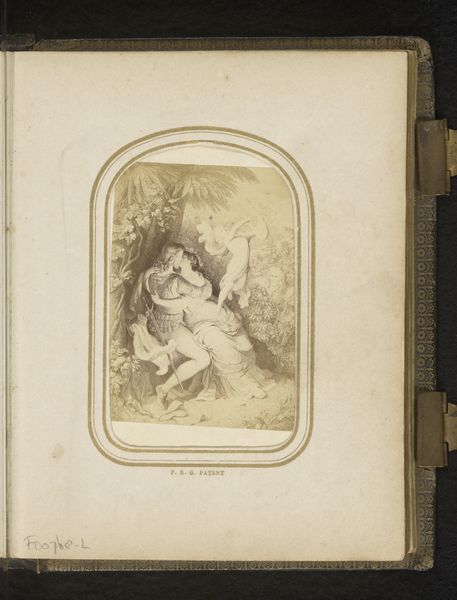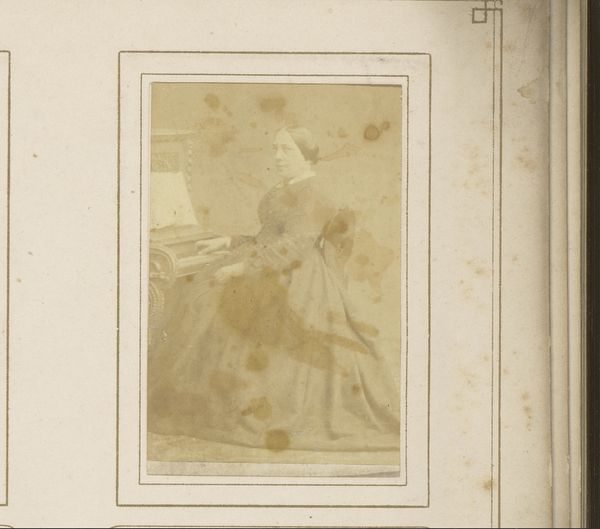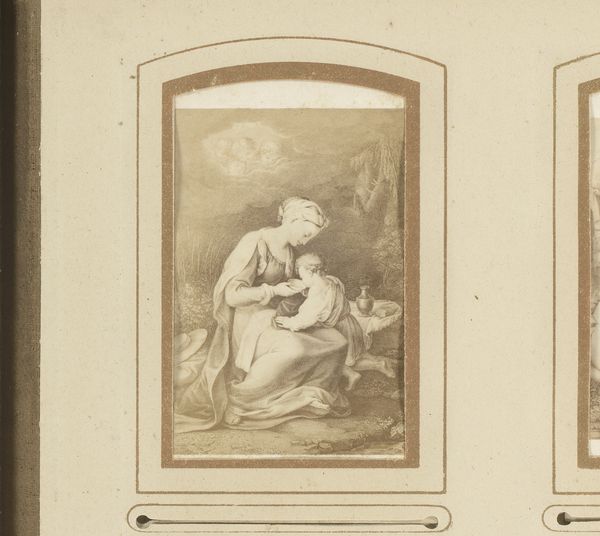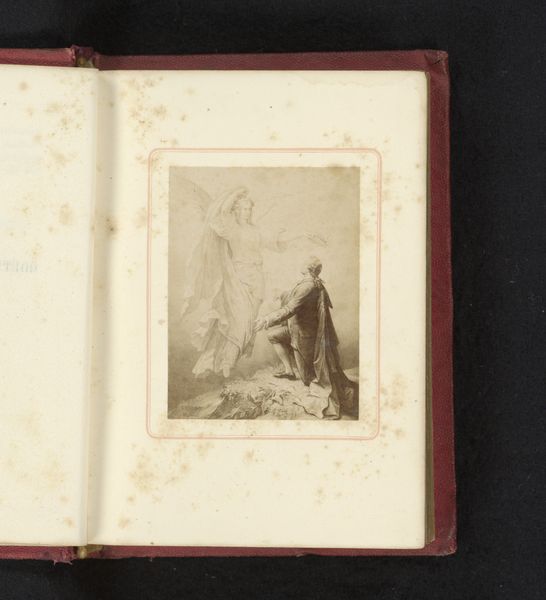
Fotoreproductie van een prent van The Sailor Boy's Dream of Home door vermoedelijk Thomas Brooks 1860 - 1880
0:00
0:00
Dimensions: height 81 mm, width 49 mm
Copyright: Rijks Museum: Open Domain
Curator: This gelatin silver print, likely from between 1860 and 1880, is a reproduction of what’s believed to be a painting called “The Sailor Boy’s Dream of Home” originally by Thomas Brooks. Editor: There’s a pervasive melancholic feeling here, isn’t there? The lone figure gazing out to sea evokes longing, and that figure slumped at his feet amplifies that somber mood. Curator: The piece uses the landscape of the sea to heighten the emotionality, a trademark of Romanticism, which looked to nature to convey deeper spiritual and emotional truths. This reproductive print allowed for wider consumption and circulation of such emotionally charged imagery. The photographic process democratized art to a degree. Editor: Precisely. And when viewed through the lens of the 19th-century British Empire, we see this lone sailor not just as an individual but as part of a vast network of labor, trade, and colonial expansion. How did this work justify or critique that reality for those viewing it at the time? Curator: Right. The very materials—paper, silver—required global trade networks. Analyzing that material footprint expands our understanding of the artwork beyond simply aesthetics or even symbolism. It’s not merely a sentimental scene; it’s an artifact of a globalized economy. Editor: It is also difficult to disassociate from class. Sailors, typically working-class, were often separated from family. What narratives were being sold to romanticize, if not conceal, this experience, particularly the sailor’s place in it? Curator: Well, consider how this was disseminated, likely through prints intended for domestic consumption. It served to naturalize, or even sentimentalize, a certain level of sacrifice linked to empire. A sacrifice mainly experienced by a working-class, laboring body, removed from the romantic ideal of home. Editor: Seeing the artwork not just as a mirror of Victorian values, but an active participant in shaping them, brings it into dialogue with modern-day global issues, the legacy of labor and migration still at play today. Curator: By examining the production, reproduction, and dissemination of images like these, we uncover those embedded power structures, inviting us to investigate both their origins and contemporary reverberations. Editor: Indeed. The dreams, and realities, encoded within are more complex than initial glances might suggest.
Comments
No comments
Be the first to comment and join the conversation on the ultimate creative platform.
